Contributions of impact mixing to the spatial distribution of water ice in permanently shadowed lunar south polar complex craters: Haworth, Shoemaker, and Faustini
- 1Department of Geosciences, Auburn University, Auburn AL 36849 USA (pem0020@auburn.edu)
- 2Department of Aerospace and Engineering, Auburn University, Auburn AL 36849 USA
Introduction: Lunar south polar permanently shadowed regions (PSRs) are known to host water ice [e.g., 1-6]. Moreover, water ice may be widely distributed in micro cold traps [7]. Lunar water transport processes include material mixing [13,14,17] and thermal processes [e.g., 8,9], which leads them to thermally stable regions [e.g., 10-12]. Because PSRs temperatures <110 K, water ice may cold trap, accumulate, and later mixed in the top layer. Impact mixing may have re-distributed water ice in PSRs [13,14,16,17]. Applying this technique constrains the lateral and vertical distribution of water ice in PSRs [13-16]. Water ice is one of key scientific and resource targets on the Moon. The Volatile Investigating Polar Exploration Rover (VIPER) aims to sample volatiles within the top-meter of the lunar south pole in late 2023. Moreover, the NASA Artemis III mission plans to use these volatiles (e.g., water) as in-situ resource utilization (ISRU) for further human exploration. The present study may thus provide valuable information for such ISRU planning, such as sample conditions (e.g., volatile concentrations) and sampling localities within lunar south polar PSRs.
Objectives: Here, our goal is to analyze the spatial distribution of material mixing by impact cratering events in Haworth, Shoemaker and Faustini, where surface water ice resides, and provide water ice deposit thickness and distribution constraints. Such information is valuable for future lunar exploration missions that will sample and use water as a resource.
Methods: In this study, we investigate the material mixing depth on the floors of Haworth, Shoemaker and Faustini by obtaining crater distributions and by applying a statistical approach [17]. CraterTools [18] and Lunar Orbiter Laser Altimeter (LOLA) data [19] were used to count craters of diameters larger or equal to 100 m (Fig. 1). Mixing depths were calculated and their lateral distributions were obtained from smaller gridded areas (i.e., 56.25, 25 and 6.25 km2).
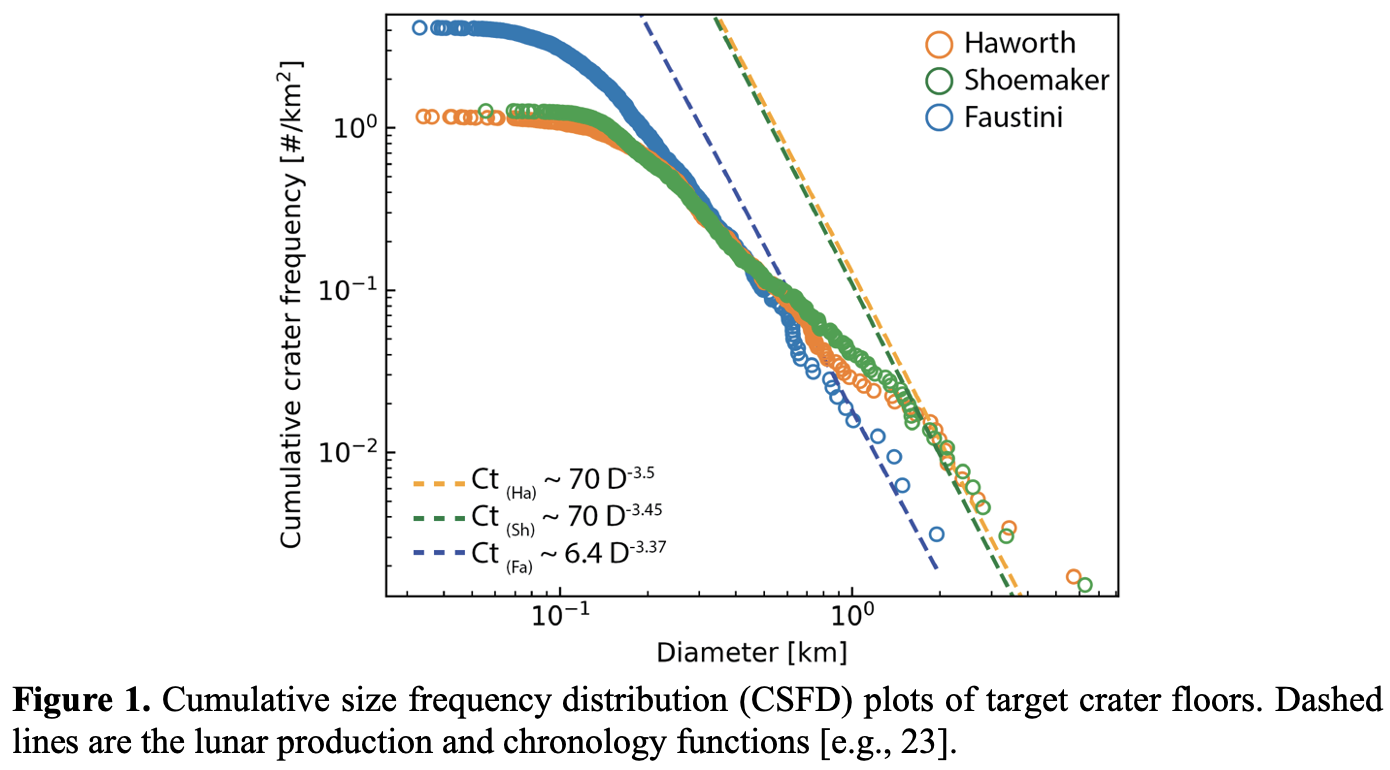
Results: Mixing depth varies between target crater floors and ranges from ~ 0.8 m to ~ 3 m (Fig. 2). Figure 3 shows the upper limit of mixing depth in the defined grids and shows vertical and lateral heterogeneity of material mixing ranging from ~ 7 cm to ~ 13 m. Figure 4 shows the lower limit of mixing depth of the same localities ranging from ~ 4 cm to ~ 7 m. From these maps it is observable that the highest depths are in areas that mostly contain larger craters whereas grids that mostly contain small crater populations show shallower depths, suggesting that the mixing process strongly depends on the crater distribution.
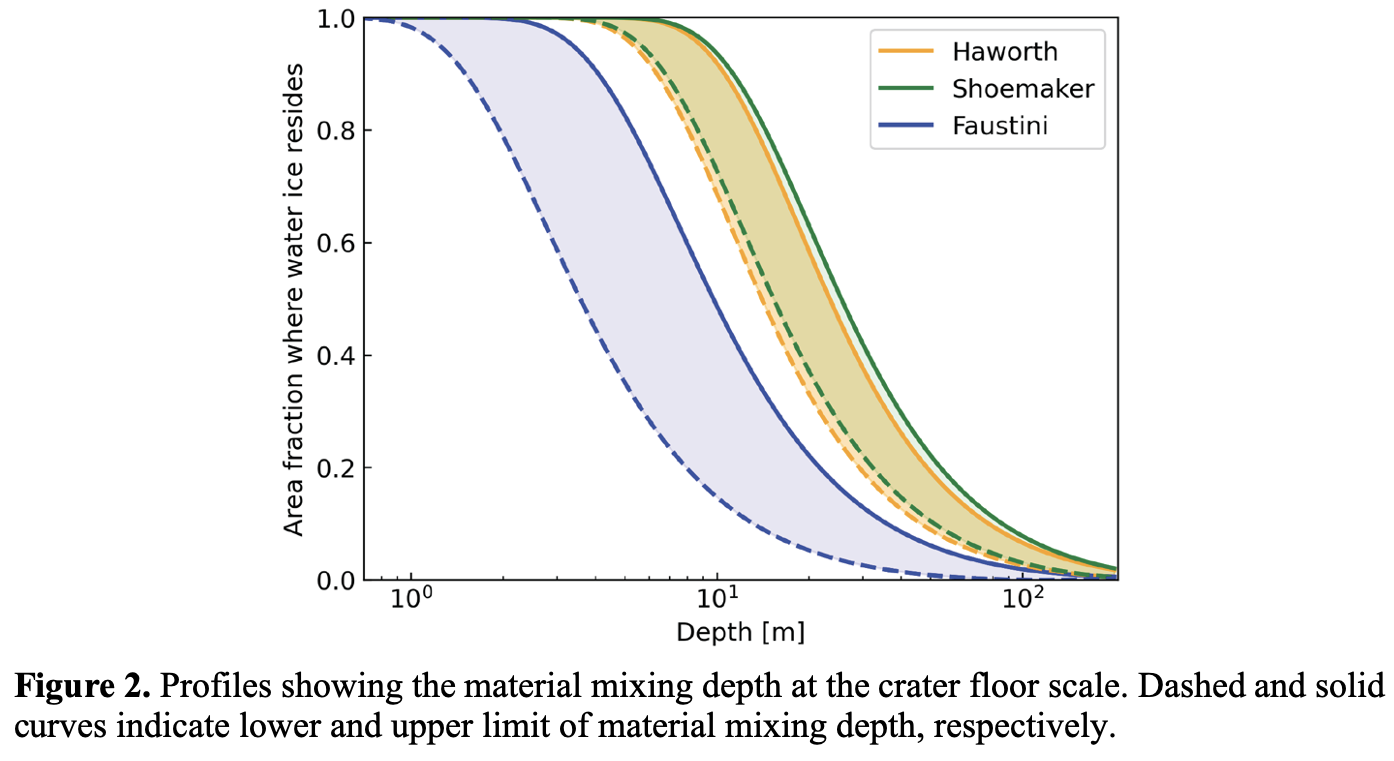
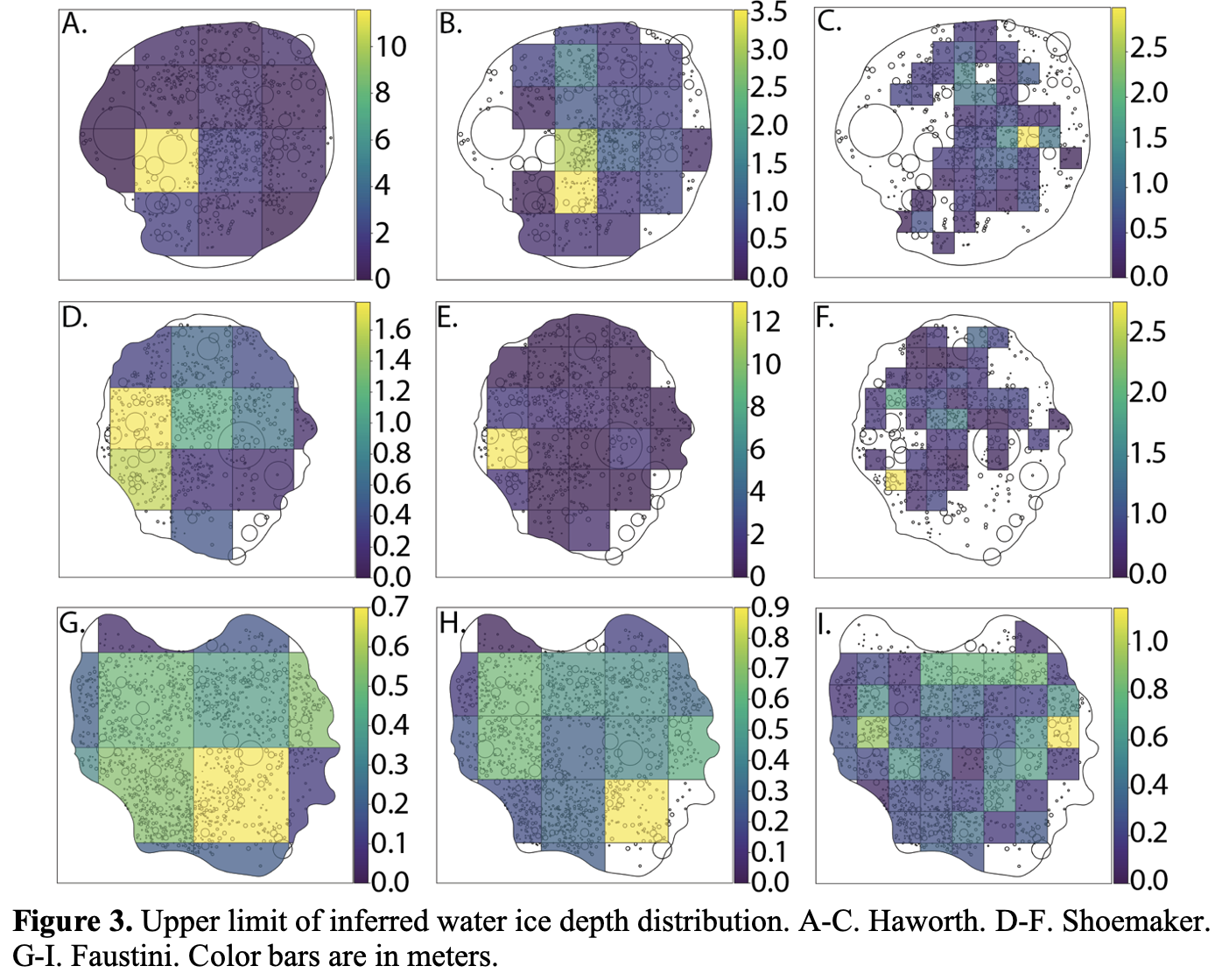
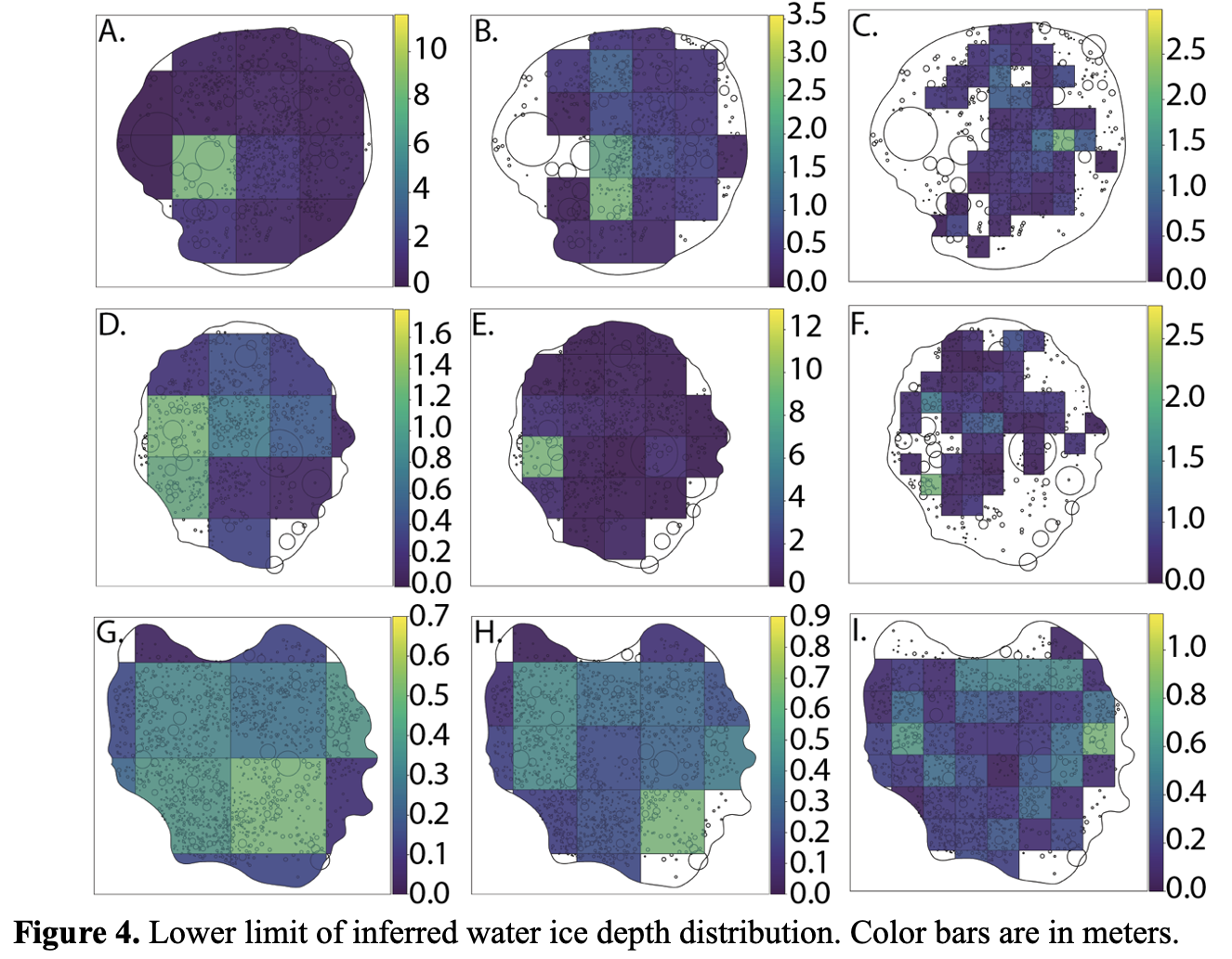
Discussion: From our results, we showed that both water ice mixing depth and concentration depend on the crater distribution and are heterogeneous at the crater floor scale. Water ice is therefore mixed throughout the impact history of these permanently shaded crater floors [20,21]. We find correlations between water equivalent hydrogen (WEH) from Lunar Exploration Neutron Detector (LEND) [23] and our water ice depths (Fig. 5). Both Haworth and Shoemaker show overlapping regions of shallower mixing and high WEH [23]. Faustini shows low WEH [23] possibly due to Malinkin’s ejecta blanket. The mixing process becomes more (less) active when more (less) craters are placed, leading to a higher (lower) material mixing depth and thus low (high) concentration. Our inferred water ice depths do not correlate with surface water ice distributions [6] (Fig. 6); surface ice distributions [6] are observed on large craters in all our target craters. These results imply that impact mixing lowers the surface water ice concentration, inferring short time evolution of water ice and thus recent transport. This is consistent with short timescale processes, such as plasma sputtering, micrometeoroid bombardment, and/or true polar wander, that would cause such short water ice lifetime [22-24].
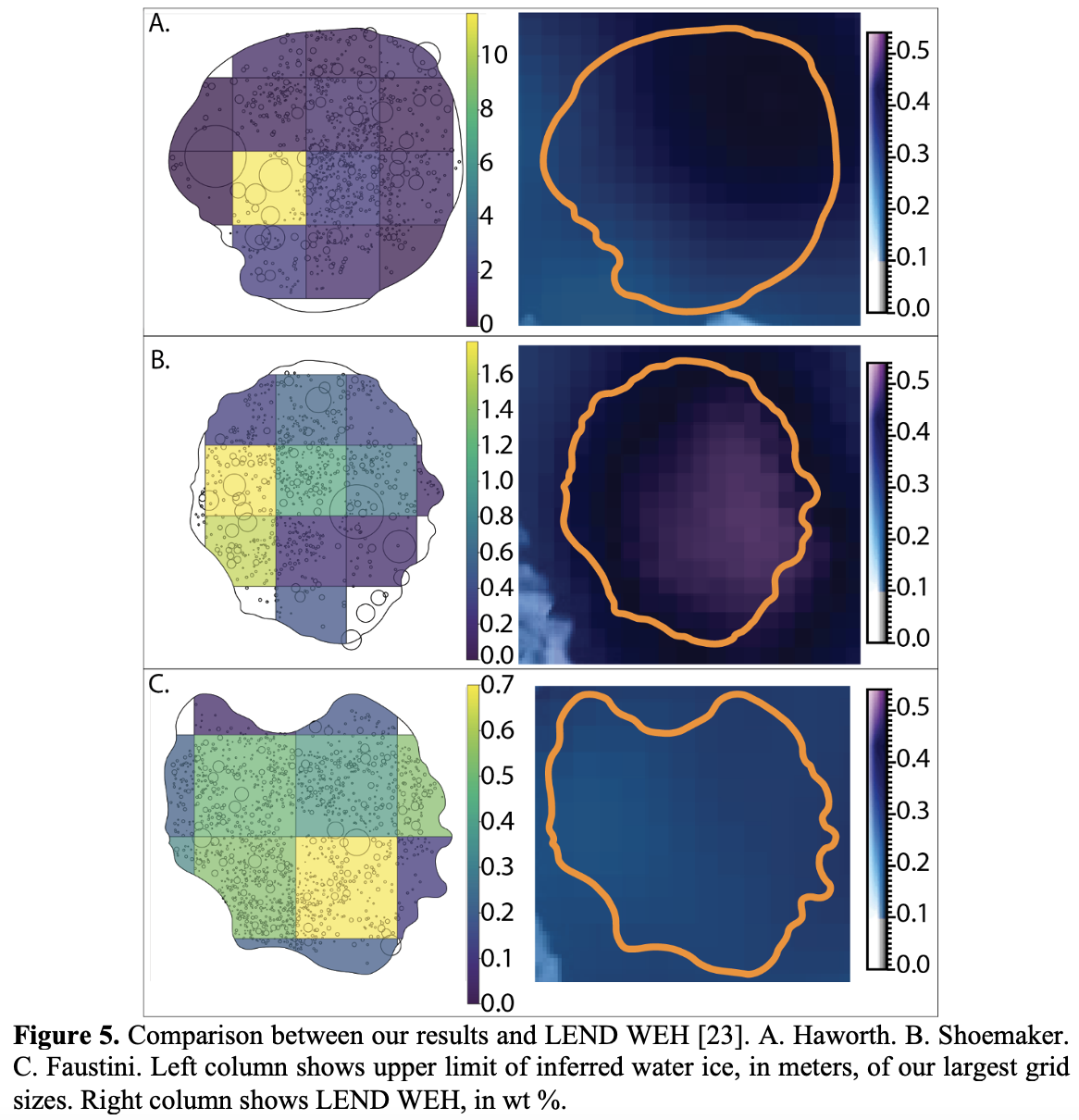
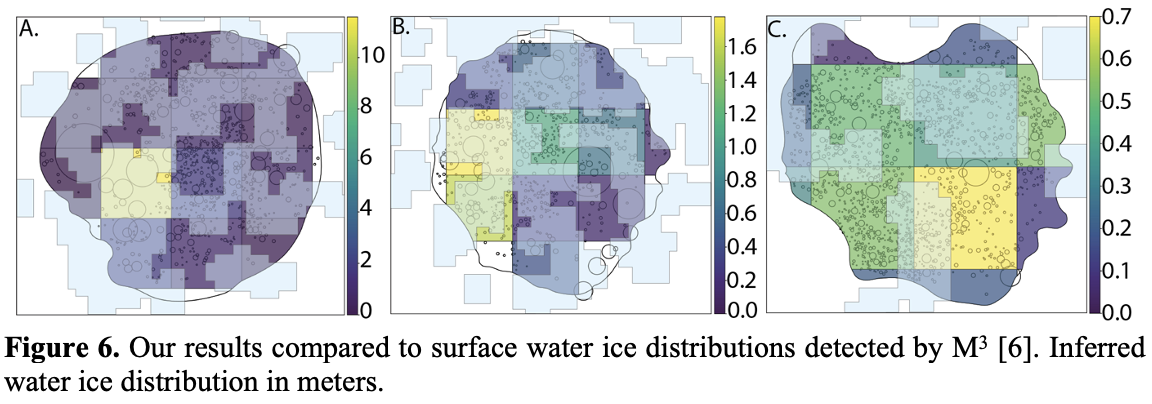
Acknowledgments: Supported by NASA EPSCoR grant no. 18-EPSCoR R3-0057.
References: [1] Gladstone (2010) Science, 330, 472-476. [2] Hayne et al. (2015) Icarus, 255, 58-69. [3] Mandt et al. (2016) Icarus,273, 114-120. [4] Fisher et al. (2017) Icarus, 292, 74-85. [5] Patterson et al. (2017) Icarus, 283, 2-9. [6] Li et al. (2018) PNAS, 115, 8907-8912. [7] Hayne et al. (2020) Nat Astron. [8] Hayne et al. (2017) JGRP, 122, 2371- 2400. [9] Stopar et al. (2017) Icarus, 298, 34-48. [10] Huang et al. (2017) JGRP, 122, 1158-1180. [11] Moores (2016) JGRP,121,46-60. [12] Prem (2015) Icarus, 255, 148-158. [13] Prem et al. (2018) Icarus, 299, 31-45. [14] Xiao and Werner (2015) JGRP,120, 2277-2292. [15] Hirabayashi et al. (2017) Icarus, 289, 134-143. [16] Costello et al. (2020) JGRP, 125, e2019JE006172. [17] Hirabayashi et al. (2018) JGRP, 123, 527-543. [18] Kneissl et al. (2011) PSS, 59, 1249-1254. [19] Smith et al. (2010) SSR, 150, 209-241. [20] Cannon and Britt (2020) Icarus, 347, 113778. [21] Cannon et al. (2020) GRL 46, e2020GL088920. [22] Farrell et al. (2019) GRL 46, 8680-8688. [23] Sanin et al. (2017) Icarus 283, 20-30. [24] Siegler et al. (2015) Nature 531, 480-484.
How to cite: Montalvo, P. E., Hirabayashi, M., and King Jr., D. T.: Contributions of impact mixing to the spatial distribution of water ice in permanently shadowed lunar south polar complex craters: Haworth, Shoemaker, and Faustini, European Planetary Science Congress 2021, online, 13–24 Sep 2021, EPSC2021-356, https://doi.org/10.5194/epsc2021-356, 2021.

